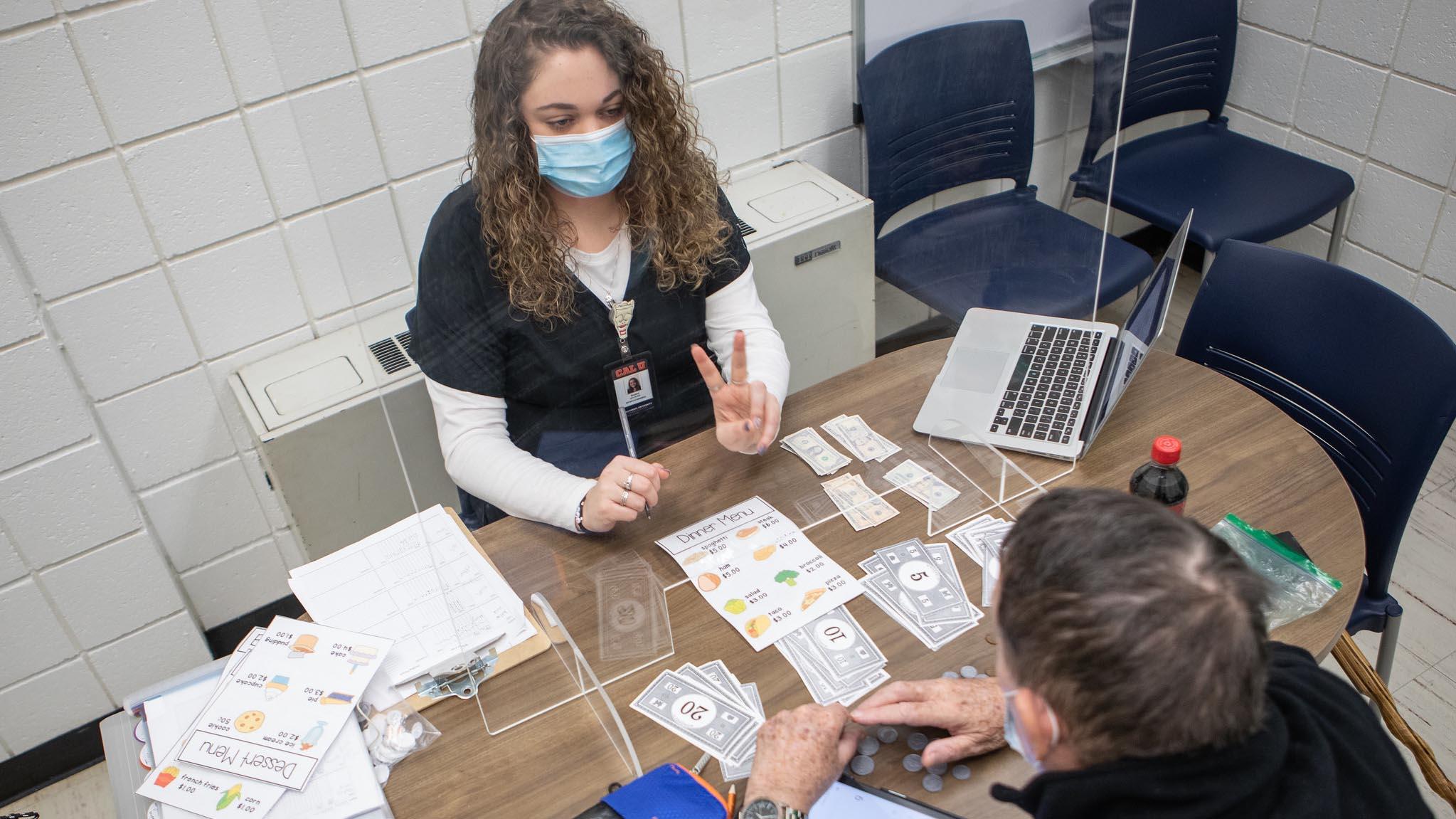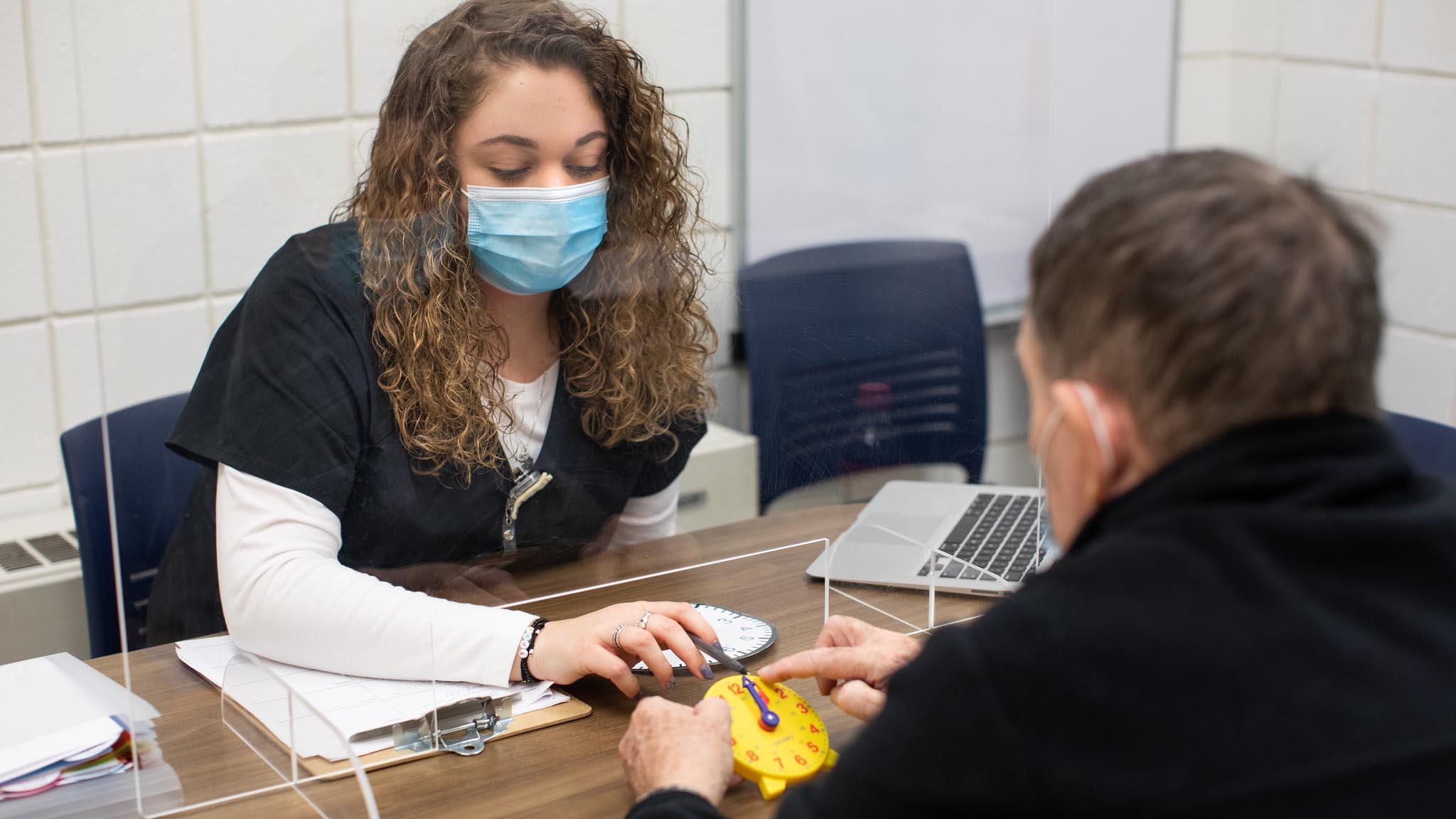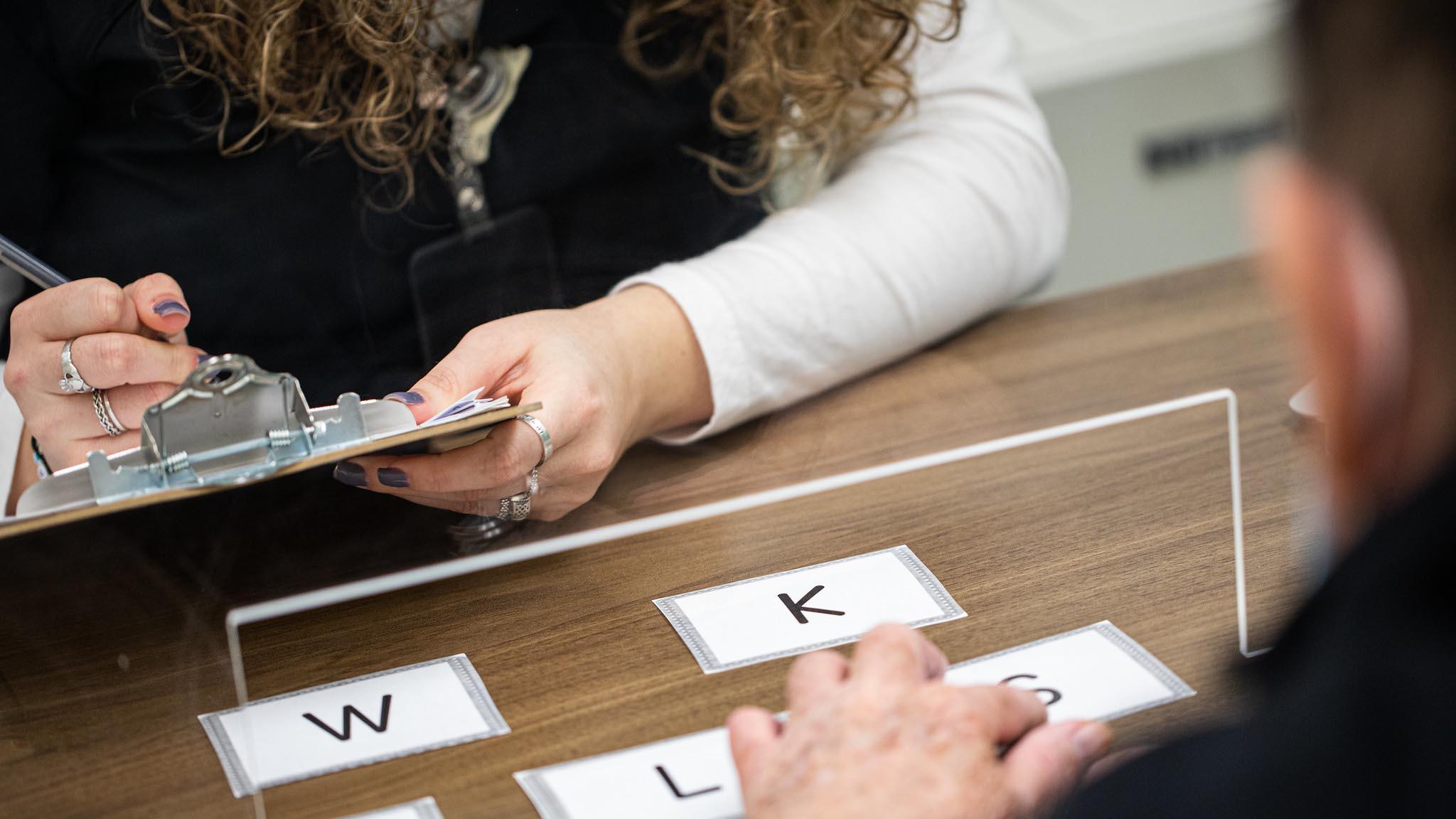Communication disorders graduate students provide important in-person therapies as tele-health services continue at the Speech and Hearing Clinic in Morgan Hall.
Students in Cal U’s master’s degree program in communication disorders have been making a smooth transition from tele-therapy appointments in the fall to some face-to-face interactions this spring.
The University is now operating at Level 3 in response to the coronavirus pandemic, meaning that some classes that require hands-on learning have been meeting in person. Face coverings and social distancing are required.
The Speech and Hearing Clinic, located in Morgan Hall, gives communication disorders students the opportunity to assess children and adults and provide appropriate therapies related to autism, articulation and language delays, stroke, dementia, and Parkinson’s disease. Faculty members supervise students’ work with clients.
This semester, 12 individuals are being seen in person, and 30 have tele-health appointments.
“We have found creative and safe ways to bring people back to campus,” said clinic supervisor April Wright. “We are maintaining social distances, and we are having a few students doing in-person therapy while others do tele-health appointments, and then we switch.
“I have seen the students get very creative: Maybe there is a video they can show someone who is struggling to make a sound if we can’t demonstrate that with a mask on,” she said. “We are finding ways. We are so happy to be back that the barriers don’t feel like barriers.”
Using tele-appointments will remain a post-pandemic option, Wright said, because it has allowed those who live a distance from campus or are in a care facility to access services.
“I think a hybrid model will remain, for that reason,” she said.
Student Taylor Ray said she values the opportunity to have experienced both in-person and virtual methods. Even if she’s seeing clients from behind a Plexiglas screen.
“I was thankful to be a part of a program that was able to utilize tele-therapy last semester,” she said. “Everything worked out smoothly, and I received great feedback from the clients that I worked with.”
The chance to work with clients in person this semester has gone well, too.
“The relationship you build with a client when physically seeing them a few times a week is something I am so grateful to be experiencing in this program,” Ray said. “Not only am I building a great relationship with my client, but I am also meeting with my clinical supervisor in person to help with any questions I may have about the sessions I am conducting.”



